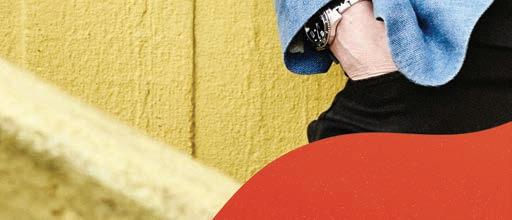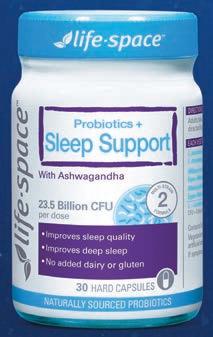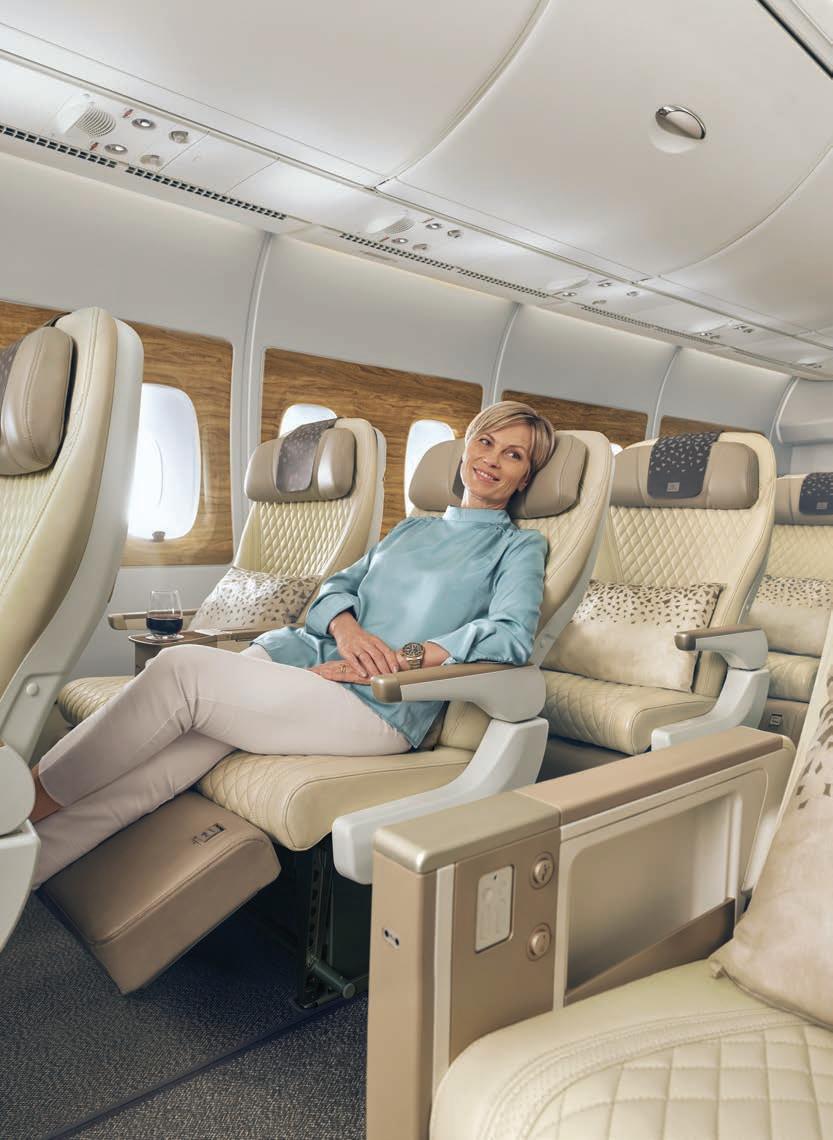





CONCERT PROGRAM Mozart’s Clarinet Concerto
11 May
Melbourne Town Hall

Artists
Melbourne Symphony Orchestra
Jessica Cottis conductor
David Thomas basset clarinet
Mairi Nicolson presenter
Program
MENDELSSOHN The Hebrides
MOZART Clarinet Concerto
– Interval –
SIBELIUS Symphony No.2
Running time: approximately 2 hours including interval

Our musical Acknowledgment of Country, Long Time Living Here by Deborah Cheetham Fraillon AO, will be performed at this concert.
Pre-concert events
Free Organ Recital: 11 May at 6.30pm, Melbourne Town Hall.
Arrive early to enjoy a recital performed by Calvin Bowman on the mighty Grand Organ, free for ticket holders.
In consideration of your fellow patrons, the MSO thanks you for silencing and dimming the light on your phone.
This concert may be recorded for future broadcast on MSO.LIVE
Acknowledging Country
Australia, the MSO has developed a musical Acknowledgment of Country with music composed by Yorta Yorta composer Deborah Cheetham Fraillon AO, featuring Indigenous languages from across Victoria. Generously supported by Helen Macpherson Smith Trust and the Commonwealth Government through the Australian National Commission for UNESCO, the MSO is working in partnership with Short Black Opera and Indigenous language custodians who are generously sharing their cultural knowledge.
The Acknowledgement of Country allows us to pay our respects to the traditional owners of the land on which we perform in the language of that country and in the orchestral language of music.
from a land which has been nurtured by the traditional owners for more than 2000 generations. When we acknowledge country we pay respect to the land and to the people in equal measure.

As a composer I have specialised in coupling the beauty and diversity of our Indigenous languages with the power and intensity of classical music. In order to compose the music for this Acknowledgement of Country Project I have had the great privilege of working with no fewer than eleven ancient languages from the state of Victoria, including the language of my late Grandmother, Yorta Yorta woman Frances McGee. I pay my deepest respects to the elders and ancestors who are represented in these songs of acknowledgement and to the language custodians who have shared their knowledge and expertise in providing each text.

I am so proud of the MSO for initiating this landmark project and grateful that they afforded me the opportunity to make this contribution to the ongoing quest of understanding our belonging in this land.
 — Deborah Cheetham Fraillon AO
— Deborah Cheetham Fraillon AO
Australian National Commission for UNESCO United Nations Educational, Scientific and Cultural Organization
4
Melbourne Symphony Orchestra
Established in 1906, the Melbourne Symphony Orchestra is Australia’s pre-eminent orchestra and a cornerstone of Victoria’s rich, cultural heritage.

Each year, the MSO engages with more than 5 million people, presenting in excess of 180 public events across live performances, TV, radio and online broadcasts, and via its online concert hall, MSO.LIVE, with audiences in 56 countries.
With a reputation for excellence, versatility and innovation, the MSO works with culturally diverse and First Nations leaders to build community and deliver music to people across Melbourne, the state of Victoria and around the world.
In 2023, the MSO’s Chief Conductor, Jaime Martín continues an exciting new phase in the Orchestra’s history. Maestro Martín joins an Artistic Family that includes Principal Guest Conductor Xian Zhang, Principal Conductor in Residence, Benjamin Northey, Conductor Laureate, Sir Andrew Davis CBE, Cybec Assistant Conductor Fellow, Carlo Antonioli, MSO Chorus Director, Warren Trevelyan-Jones, Soloist in Residence, Siobhan Stagg, Composer in Residence, Mary Finsterer, Ensemble in Residence, Gondwana Voices, Cybec Young Composer in Residence, Melissa Douglas and Young Artist in Association, Christian Li.
The Melbourne Symphony Orchestra respectfully acknowledges the people of the Eastern Kulin Nations, on whose un-ceded lands we honour the continuation of the oldest music practice in the world.




MOZART’S CLARINET CONCERTO | 11 May 5
Musicians Performing in this Concert
FIRST VIOLINS
Sophie Rowell
Guest Concertmaster
Tair Khisambeev
Assistant Concertmaster
Di Jameson and Frank Mercurio#
Peter Fellin
Deborah Goodall
Karla Hanna
Lorraine Hook
Anne-Marie Johnson
Michelle Ruffolo
Kathryn Taylor
Cameron Jamieson*
Michael Loftus-Hills*

Susannah Ng*
Matthew Rigby*
SECOND VIOLINS
Robert Macindoe
Associate Principal
Mary Allison
Isin Cakmakçioglu
Freya Franzen
Cong Gu
Newton Family in memory of Rae Rothfield#
Andrew Hall
Isy Wasserman
Philippa West
Andrew Dudgeon AM#
Patrick Wong
Hyon Ju Newman#
Roger Young
Shane Buggle and Rosie Callanan#
Jenny Khafagi*
Jacqueline Edwards*
VIOLAS
William Clark
Gabrielle Halloran
Isabel Morse*
Merewyn Bramble*
Lucy Carrigy-Ryan*
Heidi von Bernewitz*
Molly Collier-O’Boyle*
Ceridwen Davies*
CELLOS
David Berlin
Principal
Rachael Tobin
Associate Principal
Rohan de Korte
Andrew Dudgeon AM#
Angela Sargeant
Rebecca Proietto
Jonathan Chim*
Joseph Kelly*
Erna Lai*
Noah Lawrence*
DOUBLE BASSES
Benjamin Hanlon
Frank Mercurio and Di Jameson#
Suzanne Lee
Stephen Newton
Sophie Galaise and Clarence Fraser#
Siyuan Vivian Qu*
Emma Sullivan*
Oakley Paul*
Caitlin Bass*
Correct as of 27 April 2023
Learn more about our musicians on the MSO website
MOZART’S CLARINET CONCERTO | 11 May 6
FLUTES
Wendy Clarke
Associate Principal
Sarah Beggs
OBOES
Michael Pisani
Acting Principal
Ann Blackburn
The Rosemary Norman Foundation#
CLARINETS
Philip Arkinstall
Associate Principal
Craig Hill
BASSOONS
Jack Schiller
Principal
Brock Imison
HORNS
David Evans* Guest Prinicpal
Saul Lewis
Principal Third
The late Hon Michael Watt KC and Cecilie Hall#
Abbey Edlin
Nereda Hanlon and Michael Hanlon AM#
Rebecca Luton*
TRUMPETS
Owen Morris Principal
William Evans
Rosie Turner
John and Diana Frew#
TROMBONES
James Kent Acting Principal
Richard Shirley
BASS TROMBONE

Mike Szabo Principal
TUBA
Timothy Buzbee Principal
TIMPANI
John Arcaro
Tim and Lyn Edward#
* Denotes Guest Musician # Position supported by








MOZART’S CLARINET CONCERTO | 11 May 7
Cottis conductor
Award-winning conductor Jessica Cottis, named ‘2019 Classical “Face to Watch”’ (The Times, UK), is much in demand, working regularly with leading orchestras such as the London Symphony Orchestra, Royal Philharmonic Orchestra, Danish Radio Symphony Orchestra, Royal Danish Opera, Oslo Philharmonic, Prague Radio Symphony Orchestra, National Symphony Orchestra Dublin, Singapore Symphony, Sydney Symphony, Los Angeles Philharmonic; and has enjoyed numerous re-invitations at the Royal Opera House, Covent Garden, and the BBC Proms. She has recorded for the BBC, ABC, and Decca Classics labels.
One of the most outstanding Australian conductors working today, Jessica Cottis has been announced Artistic Partner of Sweden’s Västerås Sinfonietta from the 23/24 Season. Since 2021, she is Chief Conductor and Artistic Director of the Canberra Symphony Orchestra, with whom she has pioneered several initiatives, including significant commissions and the championing of Australian works. Recognised for her engaging, wide-ranging and thought-provoking programming, Cottis’ domain is music of the 19 th to 21 st centuries.
A gifted communicator, Cottis works widely as an advocate for classical music. Described as a “cool, contained, super-articulate and engaging” (The Scotsman), she is a frequent contributor on BBC radio and television, commenting on a wide range of arts-related topics, from opera to architecture, synaesthesia, the environment, and acoustics. Cottis resides in London, and outside of music pursues her passion for butterflies all over the world.
 Jessica
Jessica
CLARINET CONCERTO | 11 May 8
MOZART’S
David Thomas has been the Principal Clarinet for the Melbourne Symphony Orchestra since 2000. Growing up in the Dandenong Ranges, David studied at the University of Melbourne with Phillip Miechel and later at the Vienna Conservatorium with Roger Salander. David has played as a member of the West Australian Symphony Orchestra and is an ongoing member of the Australian World Orchestra.
He has appeared as concerto soloist with the Melbourne, West Australian, Sydney, Tasmanian and Darwin Symphony orchestras, in works by Mozart, Copland, Debussy, Francaix and Brett Dean amongst others. Concertos have been written for David by Australian composers Ross Edwards, Phillip Czaplowski and Nicholas Routley, and his CD recording of the Edwards Concerto with the MSO conducted by Arvo Volmer has been released by ABC Classics.
David is actively involved in training the next generation of classical musicians at the Australian National Academy of Music, where he is the principal teacher of clarinet and head of the woodwind department.

Mairi’s love-affair with radio began after she graduated from the Sydney Conservatorium of Music, majoring in piano & singing. She spent the first decade of her ABC career reading radio news in Sydney, presenting Behind the News with John Hall, broadcasting the Sydney Symphony’s concerts, hosting In Tempo (now The Music Show on Radio National) and the Sydney International Piano Competitions. Mairi also hosted in-flight video and audio programs for major airlines.
From 1988 to 1997 Mairi was based in the UK working as a presenter of music and interview programs for BBC Radio. On Radio 4 she hosted the long-running Woman’s Hour and on Radio 3, the Drive program In Tune. She also hosted many BBC Proms in the Royal Albert Hall and toured with the BBC Philharmonic in Europe and the USA as the BBC broadcaster.
Since returning to Australia Mairi has hosted arts programs for Radio National and most programs on ABC Classic FM including Music Makers & the longrunning Opera Show.
 David Thomas basset clarinet Mairi Nicolson presenter
David Thomas basset clarinet Mairi Nicolson presenter
Program Notes
FELIX MENDELSSOHN (1809–1847)
The Hebrides – Overture, Op.26 (‘Fingal’s Cave’)
Mendelssohn was a prodigy, born into a distinguished family of Jewish bankers and philosophers. He and his sister Fanny – also a talented composer, conductor, and pianist – were raised in a warm, intellectual, highly supportive artistic family. They matured early, and a stream of musical compositions flowed from them both. Mendelssohn was clearly one of the most important German composers of his time, and infused the expressiveness of early romantic music with the clarity and intellectuality of Mozart and Haydn’s classicism. This exquisite balance found expression in a wide variety of musical genres; Mendelssohn was as at home writing Protestant oratorios such as Elijah and St. Paul as he was chamber music and symphonies. He composed a significant body of work in his relatively short life, including major works for orchestra that constitute an important part of today’s repertoire. Those works include five symphonies, six concert overtures, and six concertos.
Fingals Cave Overture, equally well known as the Hebrides Overture, is not an introduction to larger work, but simply a stand-alone concertpiece. Like so many musical compositions of the romantic period, it does have an extramusical inspiration – although it does not tell any stories. Rather, it was simply inspired by the composer’s feelings in the presence of specific experiences, in the way that Mendelssohn’s visit south in 1830 inspired his “Italian” Symphony. In 1829 Mendelssohn traveled to Scotland, touring extensively, and visited Sir Walter Scott, with whom
he made a trip to the western coast, looking out on the Hebrides. There, on August 7, he conceived the main theme of the overture. The next day he visited Fingal’s Cave, on the desolate island of Staffa, as well as the island of Iona. It wasn’t until late in 1830, during a visit to Rome that Mendelssohn finished the Scottish overture, and dedicated it to his father as a birthday present. Later, in May 1832 in London he heard its première, given by the Philharmonic Society.
The first theme of the work, heard right away, is a descending figure played in the low strings, and gives an admirable evocation of the loneliness of the image. The other main theme, and an arresting one, announced by a kind of fanfare in the brass, is soon heard in the cellos and bassoons. It suggests the inversion of the first and it remarkably calls to mind the action of wind and waves. The overture is in sonata form, and the development section depicts a maelstrom of nature. The recapitulation continues this stormy mood, which is broken with a quiet clarinet duet. The storm resumes, and finally soft woodwind figures restate the opening themes, softly ending this remarkable evocation of the rugged Scottish coast.
© 2015 William E. Runyan
WOLFGANG AMADEUS MOZART (1756–1791)
Clarinet Concerto in A, K622
I. Allegro
II. Adagio
III. Rondo (Allegro)
David Thomas basset clarinet
The clarinet was an exotic instrument in Mozart’s day. Writing to his father from the German city of Mannheim, 22-year-old Mozart exclaimed: ‘If only we had clarinets! You cannot imagine
CLARINET CONCERTO | 11 May 10
MOZART’S
the glorious effect of a symphony with flutes, oboes and clarinets.’ The famed Mannheim orchestra had no less than two clarinets; the Salzburg orchestra –in which Mozart father and son played –had none. Years later, when Mozart was making a career for himself in Vienna, he became acquainted with the Stadler brothers, Anton and Johann, skilled clarinettists who performed in various ensembles in the imperial capital. It was for Anton, the elder of the two, that Mozart composed the Clarinet Concerto, in September-October 1791.
Among the features of the clarinet that must have appealed to Mozart are the strongly differentiated colours of the instrument’s various registers. The clarinet’s tonal variety is astonishing. The low register is dark and resonant, the middle is warm and melodious, and the top is clear and bright. No other woodwind instrument has such a broad range of sounds from top to bottom.
Curiously, no other woodwind instrument has such a powerful ‘break’ in the middle of its range. Like the break in the singing voice, the clarinet break is something that players have to work hard at controlling. Playing above or below the break poses no special challenges but travelling across it can be hazardous.
And this is probably another reason why Mozart so loved the clarinet: its strong affinity with the human voice. The clarinet has a chest voice, a head voice and a break in-between. It is powered by air passing from the lungs through the lips. It sings not with words but with pure open sounds. And the smooth carriage from one sound to another – as smooth as a singer gliding from one note to the next – is one of the instrument’s specialties. ‘Never should I have thought that a clarinet could be capable of imitating a human voice so deceptively as it was imitated by you,’ wrote a critic of Anton Stadler’s playing.
Judging from the opening movement of the Clarinet Concerto, Allegro, Mozart relished putting Stadler through his paces, while simultaneously exhibiting the instrument’s kaleidoscopic range. Of particular note is Mozart’s tendency to commence a phrase in one register (either high or low) and abruptly jump to another for its continuation. There’s something marvellous about the apparent ease with which the clarinet is able to carry this out. The second movement, Adagio, is a soulful aria for clarinet and orchestra. What is remarkable is the way in which Mozart creates such beautiful, song-like melodies from such plain and simple means: the rising notes of a chord and the falling notes of a scale. Here, the building blocks of music open a portal to the sublime. By contrast, the jaunty finale in 6/8 exhibits the clarinet’s playful side. As before, the music leaps between registers. Mozart also has the soloist perform dazzling acrobatics, proving just how agile this novel instrument is.
David Thomas will be performing on basset clarinet, a variation of the modern clarinet slightly lower in pitch. On his choice to perform on this instrument, David writes: “I purchased my basset clarinet 20 years ago and it’s still one of only a handful in the country. It is a modern French instrument built by Buffet and presents a unique challenge, which reminds you why the instrument never took off. Despite this, I would never perform the concerto on a regular clarinet; it makes a considerable difference to the piece and although the orchestra is not performing on period instruments, this show of respect for Mozart’s original conception is definitely worthwhile.”
Robert Gibson © 2019
MOZART’S CLARINET CONCERTO | 11 May 11
JEAN SIBELIUS (1865–1957)
Symphony No.2 in D, Op.43
I. Allegretto
II. Tempo andante, ma rubato
III. Vivacissimo – Lento e suave –Tempo primo – Lento e suave
IV. Finale (Allegro moderato)
‘It is as if the Almighty had thrown down pieces of a mosaic from Heaven’s floor and asked me to put them together.’ Sibelius’ description of the process of symphonic composition might refer specifically to the first movement of his Second Symphony, which exemplifies the notion of a series of fragments being drawn together to create a coherent musical unit.
This was considered an unusual approach to the use of symphonic structure, but no longer seems so because the popularity of this symphony long ago tamed whatever strangeness it once possessed. This opening movement would have sounded unusual to audiences used to the symphonic writing of Brahms or Dvořák. In most of their symphonic first movements, they present a series of themes in the opening minutes (the exposition). In the following section, the themes are broken up and re-examined (the development), before their primacy is re-asserted at the movement’s conclusion (recapitulation).
In the opening Allegretto of his Second Symphony, Sibelius approaches this structure in a manner that was to be characteristic of his later work, but new for him at this point: he presents us with a series of fragmentary musical ideas at the outset then uses the development section to illustrate their capacity for unity. In the movement’s final minutes, he draws the ideas apart again until they are reduced to their essentials.
Much of the literature about this work is focused on Sibelius’ achievements in this movement, which have obscured the many other facets of the work that mark it out as transitional rather than radical. However, we see the future Sibelius in his telescoping of the third movement into the fourth. Here he re-shapes symphonic externals in a manner that would contribute to the distinctiveness of his later symphonies.
But there are many other ways in which the work is linked strongly to its predecessor. In his wildly successful First Symphony, Sibelius had taken the language of Tchaikovsky and the Romantic nationalists and put his own stamp on it. Much of the Second Symphony inhabits the same emotional territory: in terms of strong feeling, the opening movement is not as significant as the andante which follows it; in its powerful extremes of expression, this is the work’s centre of gravity. Likewise, a Romantic fervour dominates the mood of the finale.
At the conclusion of the work, it is possible to feel that the ‘darkness to light’ progression of the musical events must be ‘about’ something. Sibelius was already a national figure at this time, and an artist of some international standing: En Saga, the First Symphony, The Swan of Tuonela, Finlandia and the King Christian music were finding increasing success in Europe and the United States. With Finland in the middle of a political crisis caused by Russian claims on the country’s independence, a bold new symphony by a famous compatriot that concluded, so to speak, with the scent of victory in its nostrils, was bound to create the impression that it was a portrayal of Finland’s struggle to assert its identity.
Sibelius rejected all attempts by his well-meaning champions to project a nationalist agenda onto the music.
MOZART’S CLARINET CONCERTO | 11 May 12
His methodology, particularly in the symphony’s first half, is subtle and intricate, and does not suggest itself as the work of someone out to write musical propaganda. His evident ability to strike out on a distinctive artistic path of his own is indication enough that he was not interested in becoming the popular musical face of Finnish nationalism. As Sibelius’ most authoritative biographer, Erik Tawaststjerna, put it: ‘His conviction that the time for national-romantic symphonies was drawing to an end was growing. One might say that Sibelius experienced the romantic crisis intuitively.’
It was a trip to Italy in February 1901 that got him going on the composition of the Second Symphony. His mentor and patron, Axel Carpelan, felt the composer had sat at home long enough and that Italy would inspire him as it had inspired Tchaikovsky and Richard Strauss before him. The composer used his Italian sojourn, spent mostly in Rapallo, to begin sketches for a piece based on the exploits of Don Juan, and created other material for a fourmovement symphonic fantasy.
On returning home Sibelius realised that it was no symphonic fantasy he was creating but a fully-fledged symphony. It caused him some difficulty. ‘I have been in the throes of a bitter struggle with this symphony. Now the picture is clearer and I am now proceeding under full sail. Soon I hope to have something to dedicate to you,’ he wrote to Carpelan in November 1901. But he continued to revise the work so that its premiere in Helsinki had to be twice postponed. Sibelius himself conducted these first performances in March 1902, at which the work was an immediate success.
The symphony’s initial theme might be called unassuming – a simple rising and falling 11-note theme for the strings. It is
one of those rhythmic figures Sibelius contrives to behave like a tune, and soon blossoms into one, a pastoral theme given to the woodwinds. The horns then give out a slower, more lyrical version of the idea. Soon we encounter a more passionate, wide-ranging tune for the strings, punctuated by long pauses, and a theme for the woodwind emerging from a note held for nearly four bars. There is also a marvellous sequential theme for the strings, played pizzicato.
These individual thematic events are gradually dovetailed, superimposed and juxtaposed as Sibelius brings them closer together. And this is the meaning and purpose of this music: the creation of a logical musical argument out of the seemingly disparate fragments he at first presented to us. Where Sibelius’ tone poems are often descriptive, or at least based on external narratives, the drama here is all in the music.
The movement climaxes in the development section – remember, this was unusual for a symphony at this time – after which the musical texture is gradually filleted away until all that is left is the theme-like rhythm with which the movement began.
The striking opening of the second movement – a timpani roll followed by the pizzicato tread of lower strings – is followed by a haunting chant-like figure marked lugubre, played by the bassoons. This is the dark world Sibelius was to explore more fully in his Fourth Symphony. A feverish transformation of this bassoon theme leads to a passage of great intensity. The brass writing is notably dark and craggy, with particularly telling music for the tuba (this is the last time he would use this instrument in a symphony). The coda is magnificently bleak and abrupt.
The Vivacissimo movement contains two striking ideas: the scurrying string theme at the outset that suggests
MOZART’S CLARINET CONCERTO | 11 May 13
Bruckner while being far more fleetfooted, and a wonderfully lyrical idea – commencing with nine repeated notes – first heard on the oboe and which soon bursts forth passionately on the strings.
The first two movements have ended quietly. Now Sibelius ends his Vivacissimo by linking it directly to the Finale. A rocking three-note figure forms a bridge to the final movement, and then turns out to be its main theme, played out over a grinding accompaniment, and followed by heroic trumpet fanfares. A wonderfully harmonised woodwind theme is then transformed into a lyrical passage for the upper strings. The atmosphere of pomp, ceremony and high-flown romance is interrupted only by a wistful woodwind theme given over a murmuring accompaniment by the lower strings. The sense of triumph renews itself, however, by way of exhaustive sequential development, and the symphony ends with grand rhetorical re-statements of the final three-note theme, now joyous and resplendent.
Phillip Sametz © 2002/2004
CONCERTO | 11 May 14
MOZART’S CLARINET
My first experience with the MSO was when I was very young....We were taken to a school concert, in the Melbourne Town Hall, conducted by Sir Bernard Heinze.… and I can honestly say that the MSO has never been out of my life since.”

A Lifetime of Music
From nourishing the soul, lifting the spirits, or igniting passion, music has the ability to evoke the vast expanse of human emotions like nothing else.

For 117 years, our great Orchestra has had the honour and privilege of creating these moving musical moments – delivering a lifetime of music to generations of Victorians. But we can’t do this without your support.

A gift today to the MSO will help us deliver our annual suite of concerts and programs for audiences of all ages and musical tastes.
Each and every gift, no matter the size, makes an impact. Please join us on this important journey, and make a donation today by scanning the QR code.
Thank you for your support.
“ ”
Mary Armour – MSO Patron and lifelong concert-goer.











Supports gut microbiome health. Life-Space Probiotics + Sleep Support improves sleep quality. Life-Space Probiotics + Stress Relief relieves symptoms of stress. Always read the label and follow the directions for use. *IRI Aztec MarketEdge. Total Probiotics - Australian pharmacy and grocery (units) MAT to 14/08/2022.
CONNECTED
sleep and stress relief
them
PROUDLY PARTNERING WITH learn more
YOUR MENTAL WELLBEING AND INNER ARE
Quality
support
both
Saint-Saëns’ Organ Symphony

Umberto Clerici returns to lead the MSO in a program of orchestral favourites with an epic finale featuring organ soloist Calvin Bowman.

10 August / 7.30pm
Melbourne Town Hall BOOK NOW
MSO.COM.AU
Supporters
Supporters
MSO PATRON
The Honourable Linda Dessau AC CVO, Governor of Victoria
CHAIRMAN’S CIRCLE
Mr Marc Besen AC and the late Mrs Eva Besen AO
Gandel Foundation
The Gross Foundation
Di Jameson and Frank Mercurio
Harold Mitchell Foundation
Lady Potter AC CMRI
Cybec Foundation
The Pratt Foundation
The Ullmer Family Foundation
Anonymous
ARTIST CHAIR BENEFACTORS
Chief Conductor Jaime Martín Mr Marc Besen AC and the late Mrs Eva Besen AO
Cybec Assistant Conductor Chair
Carlo Antonioli Cybec Foundation
Concertmaster Chair Dale Barltrop
David Li AM and Angela Li
Assistant Concertmaster
Tair Khisambeev Di Jameson and Frank Mercurio
Young Composer in Residence
Melissa Douglas Cybec Foundation
2023 Composer in Residence
Mary Finsterer Kim Williams AM
PROGRAM BENEFACTORS
MSO Now & Forever Fund: International Engagement Gandel Foundation
Cybec 21st Century Australian Composers Program Cybec Foundation
Digital Transformation The Margaret
Lawrence Bequest – Managed by Perpetual, Perpetual Foundation – Alan (AGL) Shaw Endowment
First Nations Emerging Artist Program
The Ullmer Family Foundation
East meets West The Li Family Trust, National Foundation for Australia-China Relations
MSO Live Online Crown Resorts Foundation, Packer Family Foundation
MSO Education Anonymous
MSO Academy Di Jameson and Frank Mercurio
MSO For Schools Crown Resorts Foundation, Packer Family Foundation, Department of Education and Training, Victoria, through the Strategic Partnerships Program
Melbourne Music Summit Department of Education and Training, Victoria, through the Strategic Partnerships Program
MSO Regional Touring Creative Victoria, Freemasons Foundation Victoria, Robert Salzer Foundation, The Sir Andrew & Lady Fairley Foundation
The Pizzicato Effect Hume City Council’s Community Grants program, The Marian and E.H. Flack Trust, Flora & Frank Leith Charitable Trust, Australian Decorative And Fine Arts Society, Anonymous
Sidney Myer Free Concerts Sidney Myer
MSO Trust Fund and the University of Melbourne
PLATINUM PATRONS
$100,000+
Mr Marc Besen AC and the late Mrs Eva Besen AO
The Gandel Foundation
The Gross Foundation
Di Jameson and Frank Mercurio
David Li AM and Angela Li
Lady Primrose Potter AC CMRI
Anonymous (1)
VIRTUOSO PATRONS
Margaret Jackson AC
$50,000+
The Ullmer Family Foundation
Weis Family
Anonymous (1)
18
IMPRESARIO PATRONS $20,000+
Harold Bentley
The Hogan Family Foundation
David Krasnostein AM and Pat Stragalinos
Paul Noonan
Opalgate Foundation
Lady Marigold Southey AC
Kim Williams AM
Anonymous (1)
MAESTRO PATRONS $10,000+
Christine and Mark Armour
Margaret Billson and the late Ted Billson
Shane Buggle and Rosie Callanan
Krystyna Campbell-Pretty AM
Andrew Dudgeon AM
Colin Golvan AM KC and Dr Deborah Golvan
Danny Gorog and Lindy Susskind
Peter Lovell
Maestro Jaime Martín
Ian and Jeannie Paterson
Elizabeth Proust AO and Brian Lawrence
Yashian Schauble
Glenn Sedgwick
The Sun Foundation
David and Gai Taylor
Athalie Williams and Tim Danielson
Lyn Williams AM
Wingate Group
Jason Yeap OAM – Mering Management Corporation
Anonymous (2)
PRINCIPAL PATRONS $5,000+
Mary Armour
John and Lorraine Bates
Barbara Bell in memory of Elsa Bell
Bodhi Education Fund (East Meets West)
Julia and Jim Breen
Oliver Carton
John Coppock OAM and Lyn Coppock
Perri Cutten and Jo Daniell
Ann Darby in memory of Leslie J. Darby
Mary Davidson and the late Frederick Davidson AM
The Dimmick Charitable Trust
Tim and Lyn Edward
Jaan Enden
Bill Fleming
Dr John and Diana Frew
Susan Fry and Don Fry AO
Sophie Galaise and Clarence Fraser
Geelong Friends of the MSO
Jennifer Gorog
Dr Rhyl Wade and Dr Clem Gruen
Cecilie Hall and the late Hon Michael Watt KC
Hilary Hall in memory of Wilma Collie
Louis J Hamon OAM
Nereda Hanlon and Michael Hanlon AM
Dr Alastair Jackson AM
Merv Keehn and Sue Harlow
Suzanne Kirkham
Dr Elizabeth A Lewis AM
Sherry Li
Dr Caroline Liow
Gary McPherson
The Mercer Family Foundation
Marie Morton FRSA
Anne Neil
Hyon-Ju Newman
Newton Family in memory of Rae Rothfield
Ken Ong OAM
Bruce Parncutt AO
Sam Ricketson and Rosemary Ayton
Andrew and Judy Rogers
Rosemary and the late Douglas Meagher
The Rosemary Norman Foundation
Guy Ross
The Kate and Stephen Shelmerdine Family Foundation
Helen Silver AO and Harrison Young
Anita Simon
Brian Snape AM
Dr Michael Soon
Dawna Wright and Peter Riedel
Anonymous (2)
19
Supporters
ASSOCIATE PATRONS $2,500+
Carolyn Baker
Marlyn Bancroft and Peter Bancroft OAM
Sascha O. Becker
Janet H Bell
Alan and Dr Jennifer Breschkin
Patricia Brockman
Drs John D L Brookes and Lucy V Hanlon
Stuart Brown
Lynne Burgess
Dr Lynda Campbell
Janet Chauvel and the late Dr Richard
Chauvel
Breen Creighton and Elsbeth Hadenfeldt
The Cuming Bequest
Katherine Cusack
Leo de Lange
Sandra Dent
Barry Fradkin OAM and Dr Pam Fradkin
Carrillo Gantner AC and Ziyin Gantner
Kim and Robert Gearon
Janette Gill
R Goldberg and Family
Goldschlager Family Charitable Foundation
Catherine Gray
Hartmut and Ruth Hofmann
Paul and Amy Jasper
John Jones
LRR Family Trust
Margaret and John Mason OAM
H E McKenzie
Dr Isabel McLean
Ian Merrylees
Patricia Nilsson
Dr Paul Nisselle AM and Sue Nisselle
Alan and Dorothy Pattison
Sue and Barry Peake
David and Nancy Price
Peter Priest
Ruth and Ralph Renard
Tom and Elizabeth Romanowski
Liliane Rusek and Alexander Ushakoff
Jeffrey Sher KC and Diana Sher OAM
Barry Spanger
Steinicke Family
Peter J Stirling
Jenny Tatchell
Clayton and Christina Thomas
Elaine Walters OAM
Janet Whiting AM
Nic and Ann Willcock
Anonymous (4)
PLAYER PATRONS $1,000+
Dr Sally Adams
Anita and Graham Anderson
Australian Decorative & Fine Arts Society
Geoffrey and Vivienne Baker
Michael Bowles and Alma Gill
Joyce Bown
Miranda Brockman
Nigel Broughton and Sheena Broughton
Suzie Brown OAM and the late Harvey Brown
Dr Robin Burns and Dr Roger Douglas
Ronald and Kate Burnstein
Kaye Cleary
John and Mandy Collins
Andrew Crockett AM and Pamela Crockett
Dr Daryl and Nola Daley
Panch Das and Laurel Young-Das
Michael Davies
Natasha Davies for the Trikojus Education Fund
Rick and Sue Deering
Suzanne Dembo
John and Anne Duncan
Jane Edmanson OAM
Diane Fisher
Grant Fisher and Helen Bird
Alex Forrest
Applebay Pty Ltd
David and Esther Frenkiel OAM
Anthony Garvey and Estelle O’Callaghan
David I Gibbs AM and Susie O’Neill
Sonia Gilderdale
Dr Celia Godfrey
Dr Marged Goode
20
Supporters
Dr Sandra Hacker AO and Ian Kennedy AM
Dawn Hales
David Hardy
Tilda and the late Brian Haughney
Susan and Gary Hearst
Cathy Henry
Dr Keith Higgins
Anthony and Karen Ho
Peter and Jenny Hordern
Katherine Horwood
Penelope Hughes
Shyama Jayaswal
Basil and Rita Jenkins
Sandy Jenkins
Sue Johnston
John Kaufman
Angela Kayser
Drs Bruce and Natalie Kellett
Dr Anne Kennedy
Tim Knaggs
Dr Jerry Koliha and Marlene Krelle
Jane Kunstler
Ann Lahore
Kerry Landman
Kathleen and Coran Lang
Janet and Ross Lapworth
Bryan Lawrence
Phil Lewis
Andrew Lockwood
Elizabeth H Loftus
Chris and Anna Long
Gabe Lopata
John MacLeod
Eleanor & Phillip Mancini
Aaron McConnell
Wayne McDonald and Kay Schroer
Ray McHenry
John and Rosemary McLeod
Don and Anne Meadows
Dr Eric Meadows
Professor Geoffrey Metz
Sylvia Miller
Ian Morrey and Geoffrey Minter
Dr Anthony and Dr Anna Morton
Laurence O’Keefe and Christopher James
Roger Parker
Ian Penboss
Eli Raskin
Jan and Keith Richards
James Ring
Dr Peter Rogers and Cathy Rogers OAM
Dr Ronald and Elizabeth Rosanove
Marie Rowland
Jan Ryan
Martin and Susan Shirley
P Shore
John E Smith
Dr Peter Strickland
Dr Joel Symons and Liora Symons
Russell Taylor and Tara Obeyesekere
Geoffrey Thomlinson
Frank Tisher OAM and Dr Miriam Tisher
Andrew and Penny Torok
Christina Turner
Ann and Larry Turner
Leon and Sandra Velik
The Reverend Noel Whale
Edward and Paddy White
Terry Wills Cooke OAM and t
he late Marian Wills Cooke
Robert and Diana Wilson
Richard Withers
Lorraine Woolley
Youth Music Foundation
Shirley and Jeffrey Zajac
Anonymous (12)
OVERTURE PATRONS $500+
Margaret Abbey PSM
Jane Allan and Mark Redmond
Mario M Anders
Jenny Anderson
Peter Batterham
Benevity Australia Online Giving Foundation
Peter Berry and Amanda Quirk
Dr William Birch AM
Allen and Kathryn Bloom
Linda Brennan
21 Supporters
Dr Robert Brook
Elizabeth Brown
John Brownbill
Roger and Coll Buckle
Cititec Systems
Charmaine Collins
Dr Sheryl Coughlin and Paul Coughlin
Judith Cowden in memory of violinist
Margaret Cowden
Dr Oliver Daly and Matilda Daly
Merrowyn Deacon
Bruce Dudon
Melissa and Aran Fitzgerald
Brian Florence
Elizabeth Foster
Mary Gaidzkar
Simon Gaites
Dr Mary-Jane Gething
David and Geraldine Glenny
Hugo and Diane Goetze
Louise Gourlay OAM
Robert and Jan Green
George Hampel AM KC and
Felicity Hampel AM SC
Geoff Hayes
Jim Hickey
William Holder
Clive and Joyce Hollands
Rod Home
R A Hook
Gillian Horwood
Geoff and Denise Illing
Wendy Johnson
John and Christine Keys
Belinda and Malcom King
Professor David Knowles and Dr Anne McLachlan
Pauline and David Lawton
Paschalina Leach
Dr Jenny Lewis
Sharon Li
The Podcast Reader
Janice Mayfield
Shirley A McKenzie
Dr Alan Meads and Sandra Boon
Marie Misiurak
Joan Mullumby
Dr Judith S Nimmo
Estelle O’Callaghan
Brendan O’Donnell
David Oppenheim
Sarah Patterson
Adriana and Sienna Pesavento
Kerryn Pratchett
Professor Charles Qin OAM and Kate Ritchie
Alfonso Reina and Marjanne Rook
Professor John Rickard
Dr Anne Ryan
Viorica Samson
Carolyn Sanders
Dr Nora Scheinkestel
Julia Schlapp
Dr Alex Starr
Dylan Stewart
Ruth Stringer
Reverend Angela Thomas
Rosemary Warnock
Nickie Warton and Grant Steel
Amanda Watson
Deborah Whithear and Dr Kevin Whithear OAM
Dr Susan Yell
Anonymous (15)
22 Supporters
CONDUCTOR’S CIRCLE
Jenny Anderson
David Angelovich
G C Bawden and L de Kievit
Lesley Bawden
Joyce Bown
Mrs Jenny Bruckner and the late Mr John Bruckner
Ken Bullen
Peter A Caldwell
Luci and Ron Chambers
Beryl Dean
Sandra Dent
Alan Egan JP
Gunta Eglite
Marguerite Garnon-Williams
Drs L C Gruen and R W Wade
Louis J Hamon AOM
Charles Hardman
Carol Hay
Jennifer Henry
Graham Hogarth
Rod Home
Lyndon Horsburgh
Tony Howe
Lindsay and Michael Jacombs
Laurence O’Keefe and Christopher James
John Jones
Grace Kass and the late George Kass
Sylvia Lavelle
Pauline and David Lawton
Cameron Mowat
Ruth Muir
David Orr
Matthew O’Sullivan
Rosia Pasteur
Penny Rawlins
Joan P Robinson
Anne Roussac-Hoyne and Neil Roussac
Michael Ryan and Wendy Mead
Andrew Serpell and Anne Kieni Serpell
Jennifer Shepherd
Suzette Sherazee
Dr Gabriela and Dr George Stephenson
Pamela Swansson
Lillian Tarry
Tam Vu and Dr Cherilyn Tillman
Mr and Mrs R P Trebilcock
Peter and Elisabeth Turner
Michael Ulmer AO
The Hon. Rosemary Varty
Terry Wills Cooke OAM and the late Marian Wills Cooke
Mark Young
Anonymous (19)
The MSO gratefully acknowledges the support of the following Estates:
Norma Ruth Atwell
Angela Beagley
Christine Mary Bridgart
The Cuming Bequest
Margaret Davies
Neilma Gantner
The Hon Dr Alan Goldberg AO QC
Enid Florence Hookey
Gwen Hunt
Family and Friends of James Jacoby
Audrey Jenkins
Joan Jones
Pauline Marie Johnston
C P Kemp
Peter Forbes MacLaren
Joan Winsome Maslen
Lorraine Maxine Meldrum
Prof Andrew McCredie
Jean Moore
Joan P Robinson
Maxwell Schultz
Miss Sheila Scotter AM MBE
Marion A I H M Spence
Molly Stephens
Gwennyth St John
Halinka Tarczynska-Fiddian
Jennifer May Teague
Albert Henry Ullin
Jean Tweedie
Herta and Fred B Vogel
Dorothy Wood
23 Supporters
COMMISSIONING CIRCLE
Mary Armour
Cecilie Hall and the Late Hon Michael Watt KC
Tim and Lyn Edward
Kim Williams AM
Weis Family
FIRST NATIONS CIRCLE
John and Lorraine Bates
Colin Golvan AM KC and Dr Deborah Golvan
Sascha O. Becker
Maestro Jaime Martín
Elizabeth Proust AO and Brian Lawrence
The Kate and Stephen Shelmerdine Family Foundation
Michael Ullmer AO and Jenny Ullmer
Jason Yeap OAM – Mering Management Corporation
ADOPT A MUSICIAN
Mr Marc Besen AC and the late Mrs Eva Besen AO
Chief Conductor Jaime Martín
Shane Buggle and Rosie Callanan
Roger Young
Andrew Dudgeon AM
Rohan de Korte, Philippa West
Tim and Lyn Edward
John Arcaro
Dr John and Diana Frew
Rosie Turner
Sophie Galaise and Clarence Fraser
Stephen Newton
Dr Mary-Jane Gething AO
Monica Curro
The Gross Foundation
Matthew Tomkins
Dr Clem Gruen and Dr Rhyl Wade
Robert Cossom
Cecilie Hall and the late Hon Michael Watt KC
Saul Lewis
Nereda Hanlon and Michael Hanlon AM
Abbey Edlin
Margaret Jackson AC
Nicolas Fleury
Di Jameson and Frank Mercurio
Elina Fashki, Benjamin Hanlon, Tair Khisambeev, Christopher Moore
Dr Elizabeth A Lewis AM
Anthony Chataway
David Li AM and Angela Li
Dale Barltrop
Gary McPherson
Rachel Shaw
Anne Neil
Eleanor Mancini
Hyon-Ju Newman
Patrick Wong
Newton Family in memory of Rae Rothfield Cong Gu
The Rosemary Norman Foundation
Ann Blackburn
Andrew and Judy Rogers
Michelle Wood
Glenn Sedgwick
Tiffany Cheng, Shane Hooton
Dr Martin Tymms and Patricia Nilsson
Natasha Thomas
Anonymous
Prudence Davis
HONORARY APPOINTMENTS
Life Members
Mr Marc Besen AC
John Gandel AC and Pauline Gandel AC
Sir Elton John CBE
Harold Mitchell AC
Lady Potter AC CMRI
Jeanne Pratt AC
Michael Ullmer AO and Jenny Ullmer
Anonymous
MSO Ambassador
Geoffrey Rush AC
The MSO honours the memory of Life Members
Mrs Eva Besen AO
John Brockman OAM
The Honourable Alan Goldberg AO QC
Roger Riordan AM
Ila Vanrenen
24 Supporters
MSO ARTISTIC FAMILY
Jaime Martín
Chief Conductor
Xian Zhang
Principal Guest Conductor
Benjamin Northey
Principal Conductor in Residence
Carlo Antonioli
Cybec Assistant Conductor Fellow
Sir Andrew Davis
Conductor Laureate
Hiroyuki Iwaki †
Conductor Laureate (1974–2006)
Warren Trevelyan-Jones
MSO Chorus Director
Siobhan Stagg
2023 Soloist in Residence
Gondwana Voices
2023 Ensemble in Residence
Christian Li
Young Artist in Association
Mary Finsterer
2023 Composer in Residence
Melissa Douglas
2023 Cybec Young Composer in Residence
Christopher Moore
Creative Producer, MSO Chamber
Deborah Cheetham Fraillon AO
MSO First Nations Creative Chair
Dr Anita Collins
Creative Chair for Learning and Engagement
Artistic Ambassadors
Tan Dun
Lu Siqing
MSO BOARD
Chairman
David Li AM
Co-Deputy Chairs
Di Jameson
Helen Silver AO
Managing Director
Sophie Galaise
Board Directors
Shane Buggle
Andrew Dudgeon AM
Lorraine Hook
Margaret Jackson AC
David Krasnostein AM
Gary McPherson
Farrel Meltzer
Hyon-Ju Newman
Glenn Sedgwick
Company Secretary

Oliver Carton
The MSO relies on your ongoing philanthropic support to sustain our artists, and support access, education, community engagement and more. We invite our supporters to get close to the MSO through a range of special events.
The MSO welcomes your support at any level. Donations of $2 and over are tax deductible, and supporters are recognised as follows:
$500+ (Overture)
$1,000+ (Player)
$2,500+ (Associate)
$5,000+ (Principal)
$10,000+ (Maestro)
$20,000+ (Impresario)
$50,000+ (Virtuoso)
$100,000+ (Platinum)
25
Supporters
Principal
Education Partner
Major Partners
Orchestral Training Partner

Government Partners
Venue Partner

Supporting Partners
Quest
you to our
Thank
Partners
Partner Premier Partners
Southbank
Bows for Strings Ernst & Young
Media and Broadcast Partners
Trusts and Foundations
The Sir Andrew and Lady Fairley Foundation, Flora & Frank Leith Trust, Perpetual Foundation – Alan (AGL) Shaw Endowment, Sidney Myer MSO Trust Fund



Freemasons Foundation Victoria

































 Jessica
Jessica

 David Thomas basset clarinet Mairi Nicolson presenter
David Thomas basset clarinet Mairi Nicolson presenter


























